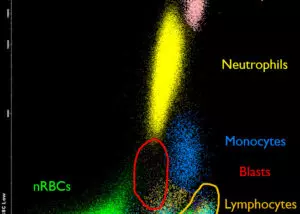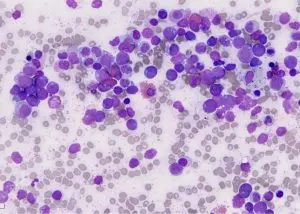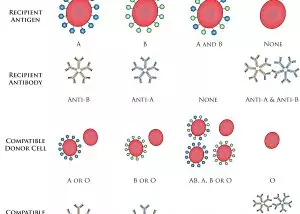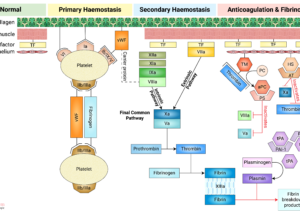The FRCPath Haematology Exam: An Overview
The FRCPath exam consists of two parts.
Part 1
Part 1 comprises two three-hour papers in a single day. It can be attempted at various centres around the world. The first paper is an MCQ paper which tests knowledge of a broad range of Haematology problems. The second paper is an essay paper with four questions, each from one of the following four domains: General Haematology, Coagulation (aka Haemostasis and Thrombosis), Transfusion and Malignant Haematology. The essays are designed to assess in-depth knowledge of core topics, and are usually broken into 2-3 main areas of questioning, with further sub-sections.
Part 2
Part 2 is a three-day examination which can only be attempted in the United Kingdom. Time-keeping is very important in the Part 2 examination, as each question has a pass/fail mark associated with it, and the total number of questions passed (as opposed to the total number of marks per se) is what determines the passing mark. Therefore, passing 6/10 questions may result in you passing the paper, but if you score 60% of available marks but only pass 3 questions, you will still fail the paper. All papers and the viva must be passed to pass the part 2 exam.
- Day 1: written, must bring your own micropscope
- Morphology shorts (10-12 questions, 90 minutes)
- Morphology long cases (3 questions, 90 minutes)
- Day 2: written, no microscope needed
- Coagulation (8-10 questions, 2 hours)
- Transfusion (8-10 questions, 2 hours)
- Day 3: viva (4 vivas with 2 topics per viva, 15 minutes per viva – i.e. 7.5 minutes per topic)
- Coagulation
- General Haematology
- Malignant Haematology
- Transfusion
Morphology (Day 1)
The first day is the morphology paper, which comprises one 90 minute “morphology shorts”, and one 90 minute paper for long cases. For the shorts, there are typically 10-12 sets of slides (usually peripheral blood films, but some cases will have bone marrow aspirates / trephines as well), each with two to three short answer questions to attempt.
The long cases will usually include at least one haemoglobinopathy case, and one of the cases may require you to report a bone marrow trephine biopsy. One or more of the short and long of the cases will typically include flow cytometry findings for interpretation.
Bear in mind that the morphology paper may include diagnoses which are not classically haematological – i.e., infections such as malaria, histoplasmosis, leishmaniasis etc.
Coagulation (Day 2)
The coagulation paper will require you to have an understanding of the assays which are done in the laboratory to assess haemostasis and thrombosis. Pregnancy and its specific management often features in at least one of the questions. Other important topics which may often be encountered include: anticoagulation (indications, intensity and reversal), quality control (NEQAS), congenital bleeding disorders (rare bleeding disorders, Haemophilia, von Willebrand’s disease) and platelet function defects.
Transfusion (Day 2)
The transfusion paper often has a significant component aimed at ensuring that you are able to ensure safe blood provision. Pre-transfusion testing and blood product selection / specifications are hence important to know. There are often questions on platelet refractoriness, transfusion reactions and blood product selection for patients with ABO incompatible transplants. As with coagulation, expect specific pregnancy scenarios such as management of anti-D prophylaxis in pregnancy, allo-antibodies in pregnancy and neonatal alloimmune thrombocytopaenia to feature. There is usually also a question on quality control (NEQAS) and antigram interpretation.
Viva (Day 3)
The viva lasts an hour for each candidate, and happens on the last day of the examination. There are four vivas, each with two lines of questioning. The domains are: General Haematology, Coagulation, Transfusion and Malignant Haematology.
The viva is conducted by a pair of examiners. The examiner conducting the viva should not be a sub-specialist in that field. Each line of questioning takes 7.5 minutes, and is broadly divided into an introductory and a competence set of questions. The aim is to assess if you can manage patients safely.
The viva may or may not be on topics which have previously come up in the written papers.
FRCPath Exam Preparation
Prepare for the FRCPath Haematology examination with our dynamic, expanding set of materials. We have over 300 digitised blood films, bone marrow aspirates and trephine biopsies with descriptions and differential diagnoses for you to work through. The morphology section also includes a comprehensive overview of the common thalassaemias and haemoglobinopathies, together with acid and alkaline gel electrophresis and HPLCs.
For the other sections, we have summarised available guidance from NHSBT, BCSH and SHOT to aid your preparation. We also have worked examples for commonly-encountered problems such as coagulation assay interpretation, antigrams, ABO discrepancies and NEQAS.

Flow Cytometry
Flow cytometry allows phenotyping characterisation of cell populations by analysing

FRCPath Haematology Part 2: Morphology
The FRCPathy Haematology Part 2 Morphology paper comprises two 90

FRCPath Haematology Part 2: Transfusion
This course covers transfusion for the Haematology FRCPath Part 2

Haemostasis and Thrombosis (Advanced)
This course covers haemostasis and thrombosis for haematology trainees. Review
